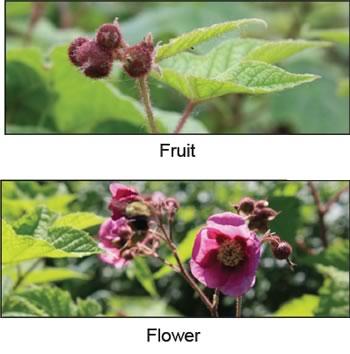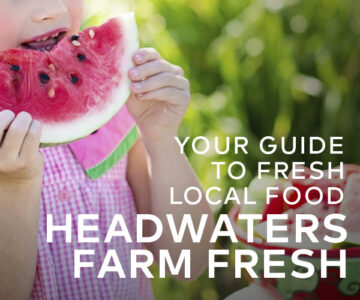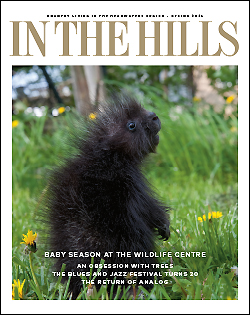Flowering Raspberry
Purple flowering raspberry is a beautiful shrub that has a pretty purple flower with a yellow center.
Rubus odoratus aka flowering raspberry, purple flowering raspberry and thimbleberry is a beautiful shrub that has a pretty purple flower with a yellow center. Best ornamental raspberry with a long bloom time. Native to rocky, shaded banks but very adaptable. Somewhat tolerant of urban pollution. Best pruned in late winter after extreme cold. Attracts birds and pollinators.
 Flowering Raspberry Characteristics
Flowering Raspberry Characteristics
Leaves: Large soft green maple-like leaves turn yellow in the fall. Fragrant, licorice scented foliage.
Stem/Bark: Unique thornless raspberry with hairy stems.
Flower: Fragrant pinkish-purple flowers from June to September.
Fruit/Nut: Red berries are edible and can be used in jellies, pies, etc. However, not very palatable as they are tart, dry and very seedy. Enjoyed by birds.
Habit: Fast growing multi-stemmed deciduous shrub forms an upright spreading open mound and tends to be leggy.
Light Requirements: Sun, Partial Shade
Hardiness: Zone 3
Height: 5’ – 7’
Width: 4’ – 5’
Why grow native plants?
A native plant is defined as a species of fauna that was already established before colonization. There are numerous benefits to the use of native plants. Native plants have grown and evolved in a given area for generations and therefore are more prepared to face the elements. As a result they are much hardier and less finicky to care for. The wildlife in the area has also evolved along side these plants, and because of this has formed bonds with them. Most butterflies have a specific plant species from which they collect nectar for their offspring.
There are many birds that will feed directly from local trees for seed, nectar or fruit, but won’t use the bird feeder you’ve bought to attract them. These plants also work together to grow as natural plant communities. Most of the trees won’t grow their leaves until after the wildflowers have had an adequate amount of time to flower before they’re covered by shade. Finally, of course, there is the fact that all of these plants and animals combine to make a sustainable, complete, functioning ecosystem. Why fight thousands of years of evolution?
Have questions about native plants? Post a comment Ian will get back to you.






